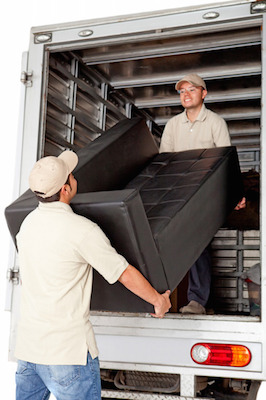Think moving a piano is as easy as moving a big piece of furniture? Think again.
A piano not only is big and bulky, it also has special needs and requirements. Handle the move incorrectly and you could be paying dearly for the mistake through lots of repair and restoration to bring your piano back up to working condition.
All pianos have one thing going for them that makes them awkward to move – uneven weight. Upright pianos are extremely top heavy while balancing on tiny, delicate legs. Grand pianos not only have a lot of bulk and weight, their size makes them anything but easy to handle.
And while the outside of a piano alone can give you problems when moving, it’s the inside that is also of concern. Scratches to the outside finish can be devastating to a vintage or antique piano, but damage to the inside can amount in thousands of dollars in repair bills bringing it back into playing condition.
To move it properly, you need two things in place:
- A properly prepared moving crew
- A properly prepared piano
A properly prepared moving crew is not your average moving team. It takes more than two people to move a piano. The more difficult the move, the more people you’ll need on the team. It takes work getting a grand piano from place to place, especially if there are sharp corners and large flights of stairs.
A professional piano moving team knows how to use proper tools to significantly reduce the risk of injury. They use dollies along flat surfaces. They use helpers to guide them through difficult passages. They may even use cranes if the situation warrants the need.
And every professional piano mover knows that long before they lift the piano, the preparation will determine how successful the move will be.
Never move a piano on it’s metal casters or put undo weight on its delicate legs. Legs are used more for decoration and for support, not for heavy movement. If at all possible, the casters and legs will be removed and packed before the move, reassembled once its in its final resting spot.
For a grand piano, the lid should be closed and locked. Then the piano should be thoroughly wrapped and protected before movement is made.
Moving a piano is difficult in the best of situations, but if you’re combining it with a house move as well, there are extra things to keep in mind.
Because your piano movers are scheduled at a certain time, make sure it coincides with a good time with the rest of your moving crew. A piano can’t be shuffled around large pieces of furniture or stacks of filled boxes. Design the track used for moving a piano in and out of your homes and keep the pathway clear for the move. A clear path will give you every advantage of having a smooth transition from place to place.
When your piano is in place, give it time to acclimate to its new conditions. Then with tuning, your piano will be back and ready to play once again.


